Environmental Health and Safety - Hazard Communication Program
HAZARD COMMUNICATION PROGRAM
Globally Harmonized System of Classification and Labelling of Chemicals (GHS) Symbols
![]()
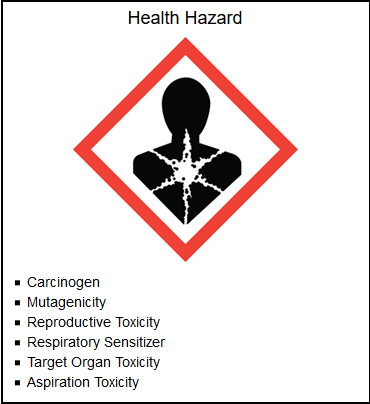
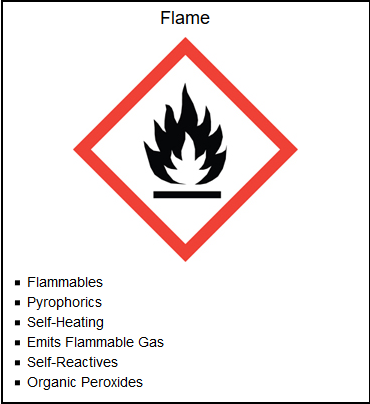
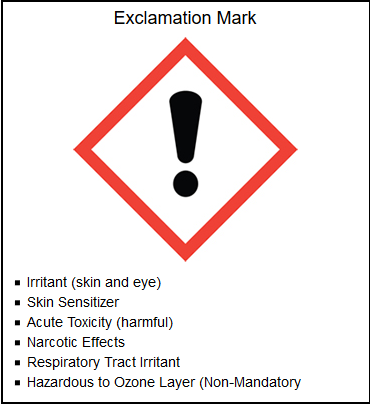
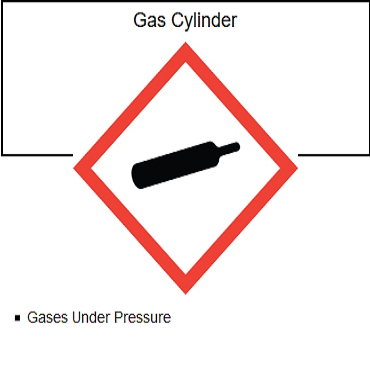
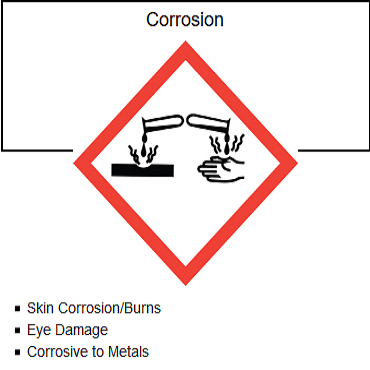
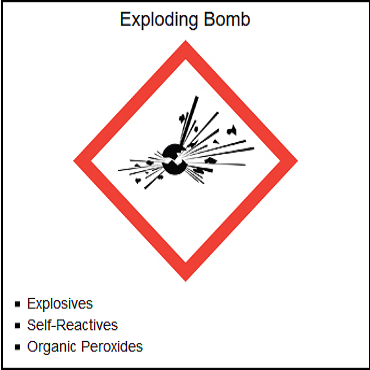
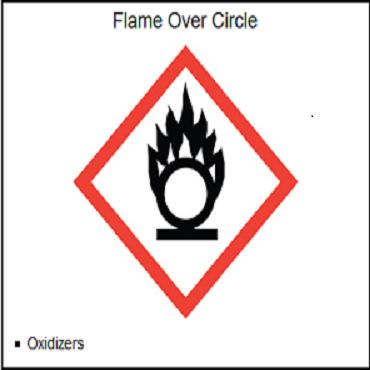
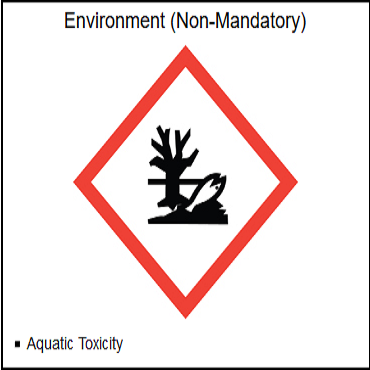
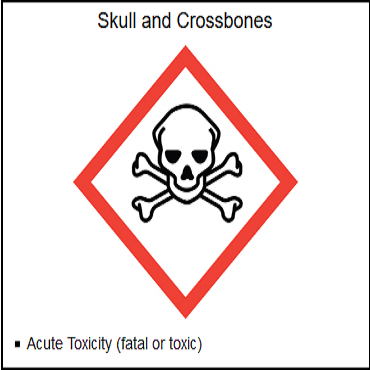
(note: The Occupational Safety & Health Administration is in the process of revising the regulations that govern this program. These revisions are scheduled to be finalized in Fall 2011. Soon after, this program will be revised to reflect the changes.)
INTRODUCTION
Western Kentucky University recognizes that our employees have the right and the need to know the properties and potential health problems related to the substances to which they may be exposed. With this program, Western Kentucky University intends to inform employees of the necessary information regarding substances in the workplace, pursuant to the Federal Occupational Safety and Health Act Hazard Communication Standard, 29 CFR 1910.1200 as adopted in the Kentucky Occupational Safety and Health Standards for General Industry.
Objective
This program is designed to protect Western Kentucky University employees. Its purpose is to inform workers of hazards that may exist in the work place. This program will also ensure Western Kentucky University 's compliance with all State and Federal regulations and standards. We expect to help encourage a reduction in the volume and toxicity of hazardous substances used at WKU.
Applicability
This program pertains to employees in non-laboratory workplaces who may be potentially exposed to hazardous chemicals. Employees working in laboratories must use Western Kentucky University 's Chemical Hygiene Plan rather than the Hazard Communication Program.
Health & Physical Hazards
A hazardous substance is defined as any substance that is a physical or a health hazard, i.e. compressed gases, explosives, flammables, oxidizers, carcinogens, toxins, irritants, or corrosives.
Health Hazards
Any chemical or biological substance or agent, which is listed in the U.S. Occupational Safety and Health Administration's list of Toxic and Hazardous Substances 29 CFR Part 1910, Subpart Z, is considered a health hazard. In addition, any substance, including but not limited to, chemicals which are carcinogens, toxic or highly toxic agents, reproductive toxins, irritants, corrosives, sensitizers, hematopoietic system, or agents which damage the lungs, skin, eyes or mucous membranes, and any substance for which a Material Safety Data Sheet has been provided by the manufacturer as a hazardous material or one that has been deemed to pose a threat to the health of an employee, is also considered a hazard to employee health.
Physical Hazard
Any chemical which is a compressed gas, explosive, flammable, organic peroxide, oxidizer, pyrophoric, unstable (reactive) or water-reactive, and which is contained in the U.S. Occupational Safety and Health Administration's list of Hazardous Materials, 29 CFR 1910, Subpart H is considered to be a physical hazard. Any substance for which a MSDS has been provided by the manufacturer as a hazardous material or one that has been deemed to pose a threat to the health of an employee is also included.
RESPONSIBILITIES
WKU Extended Campuses are responsible for developing and maintaining internal procedures, which should be consistent with this program.
Environmental Health and Safety is responsible for:
- administering the WKU Hazard Communication Program;
- coordinating the development and updating of the program;
- keeping the master list of Material Safety Data Sheets for a period of 30 years and loading them onto our website for quick access;
- providing departments with new-hire training and annual refresher training.
Stockroom Supervisors are responsible for:
- receiving a copy of the MSDS for every hazardous substance that the stockroom sells or transfers to other departments;
- assuring that the receiving department or individual receives a copy of the MSDS for the chemicals they purchase;
Supervisors are responsible for:
- annually updating the chemical inventory list for all hazardous chemicals in their employee's work location;
- obtaining an MSDS from the manufacturer or distributor if one has not been supplied;
- ensuring that all hazardous chemical containers in their work area are properly labeled;
- providing each employee with the necessary training according to this program.
Project Managers are responsible for:
- informing contractors of WKU's safety procedures, labeling requirements and disclosing information on Material Safety Data Sheets to protect all contracted employees in their designated work areas;
- issuing the contractor a copy of the WKU Hazard Communication Program;
-
informing contractors of the specific hazards associated with the work area.
Outside Contractors are responsible for:
- complying with Occupational Safety and Health Administration (OSHA) Hazard Communication Standard;
- informing WKU project manager of the intent to use and/or store hazardous chemicals on site during their contract at WKU;
- providing WKU project manager with their hazard communication program and MSDS for hazardous chemicals to be used during contract period;
- providing or having employees attend training on the potential hazards of the work area and proper documentation that employees have been through this training is to be given to the project manager.
Employees are responsible for:
- using hazardous chemicals consistent with the instructions provided on the label;
- using chemicals only if containers are properly labeled and notifying supervisor if labels are missing or inadequate;
- notifying supervisor if Material Safety Data Sheets are missing or inadequate.
Program Enforcement
A violation by a Western Kentucky University employee must be reported to the employee's supervisor for appropriate action.
A violation by an outside contractor must be reported to the WKU Project Manager and is subject to the conditions of the contract.
Employee Rights
Your workplace is required to have Material Safety Data Sheets available for every hazardous chemical or substance you use or encounter as a part of your job.
These must be readily available for employee review at all times you are in the work place. In other words, they can not be locked in an office or filing cabinet to which you do not have access. If you request to see an MSDS for a product you use at work, and your employer cannot show it to you, after one working day you may refuse to work with that product until you are shown the correct MSDS. If you request your own personal copy of an MSDS, your employer has 15 working days to provide it.
Chemical Inventory & Material Safety Data Sheets
Inventory Requirements
Departments must maintain a current hazardous chemical inventory list for their area of operations. This list is to be updated annually by department supervisors and turned into EH&S no later than August 1 of each year. Chemical inventory lists must be submitted in alphabetical order and shall be verified for completeness by the appropriate department head. Each chemical inventory list is subject to audit by the EH&S Department. The EH&S Department will provide copies of the chemical inventory lists to the Local Fire Department and the Local Emergency Planning Committee. Each time a department receives a new hazardous chemical it must be added to the department's chemical inventory list within 30 days. There is an example and blank chemical inventory list located in APPENDIX B of this document. All of the following information must be provided on the chemical inventory list.
- Department : The name of the proprietary department.
- Inventory Supervisor : The name of the employee/Supervisor that is responsible for the department's chemical inventory list.
- Phone : The phone number of the department.
- Building Name : The full official name of the building.
- Date of Inventory : The date the inventory was completed.
- Product/Trade/MSDS Name : The trade name or number, code name or number, brand name, generic name, or chemical name.
- Physical State : Physical state of the substance (solid, liquid, gas, or a mixture thereof).
- PPE Required : Personal Protective Equipment the MSDS requires for use. Gloves, respirator, or goggles
- Chemicals listed: List the top three ingredients and %
- NFPA Rating : The National Fire Protection Association rating which is a numerical code that rates the substance according to health, flammability, reactivity, and specific hazards.
- MSDS DATE : Date that appears on the MSDS sheet.
Material Safety Data Sheet Requirements
The Material Safety Data Sheet (MSDS) is a detailed information bulletin prepared by the manufacturer or importer of a chemical that describes the physical and chemical properties, physical and health hazards, routes of exposure, precautions for safe handling and use, emergency and first-aid procedures, and control measures. Information on a MSDS aids in the selection of safe products and helps employers and employees to respond effectively to daily exposure situations, as well as, to emergency situations.
Under OSHA regulations, employers are required to maintain a complete and accurate MSDS for each hazardous chemical that is used in the facility. They are entitled to obtain this information automatically upon purchase of the material. When new and significant information becomes available concerning a product's hazards or ways to protect against the hazards, chemical manufacturers, importers, or distributors must add it to their MSDS within three months and provide it to their customers with the next shipment of the chemical.
While MSDSs are not required to be physically attached to a shipment, they must accompany or precede the shipment. When an MSDS is not provided, the employer must obtain one from the chemical manufacturer, importer, or distributor as soon as possible. In addition, if the MSDS is incomplete or unclear, the employer should contact the manufacturer to get clarification or obtain the missing information.
Sections of an MSDS
MSDS
OSHA specifies the information to be included on an MSDS, but does not provide a precise format. A non-mandatory MSDS form that meets the Hazard Communication Standard requirements has been issued and can be used as is or expanded as needed. The MSDS must be written in English and include the following information.
Section I. Chemical Identity
The chemical and common name must be provided for single chemical substances.
An identity on the MSDS must be cross-referenced to the identity found on the label.
Section II. Hazardous Ingredients
For a hazardous chemical mixture that has been tested as a whole to determine its hazards, the chemical and common names of the ingredients that are associated with the hazards, and the common name of the mixture must be listed.
If the chemical is a mixture that has not been tested as a whole, the chemical and common names of all ingredients determined to be health hazards and comprising one percent or greater of the composition must be listed.
Chemical and common names of carcinogens must be listed if they are present in the mixture at levels of 0.1 percent or greater.
All components of a mixture that have been determined to be health hazards and comprising less than one percent (0.1 percent for carcinogens) of the mixture must also be listed if they can still exceed an established Permissible Exposure Limit (PEL) or Threshold Limit Value (TLV) or present a health risk to exposed employees in these concentrations.
Section III. Physical and Chemical Characteristics
The physical and chemical characteristics of the hazardous substance must be listed. These include items such as boiling and freezing points, density, vapor pressure, specific gravity, solubility, volatility, and the product's general appearance and odor. These characteristics provide important information for designing safe and healthful work practices.
Section IV. Fire and Explosion Hazard Data
The compound's potential for fire and explosion must be described. Also, the fire hazards of the chemical and the conditions under which it could ignite or explode must be identified. Recommended extinguishing agents and fire-fighting methods must be described.
Section V. Reactivity Data
This section presents information about other chemicals and substances with which it reacts. Information on any hazardous decomposition products, such as carbon monoxide, must be included.
Section VI. Health Hazards
The acute and chronic health hazards of the chemical, together with signs and symptoms of exposure, must be listed. In addition, any medical conditions that are aggravated by exposure to the compound must be included. The specific types of chemical health hazards defined in the standard include carcinogens, corrosives, toxins, irritants, sensitizers, mutagens, teratogens, and effects on target organs (i.e., liver, kidney, nervous system, blood, lungs, etc.).
The route of entry section describes the primary pathway by which the chemical enters the body. There are three principle routes of entry: inhalation, absorption, and ingestion.
This standard requires the preparer to describe the precautions for safe handling and use. These include recommended industrial hygiene practices, precautions to be taken during the repair and maintenance of equipment, and procedures for cleaning up spills and leaks. Some manufacturers also use this section to include useful information not specifically required by the standard, such as EPA waste disposal methods and state and local requirements.
Section VIII. Control Measures
The standard requires the preparer of the MSDS to list any generally applicable control measures. These include engineering controls, safe handling procedures, and personal protective equipment. Information is often included on the use of goggles, gloves, body suits, respirators, and face shields.
Labeling Hazardous Chemicals
Labeling Requirements
All hazardous chemicals must be labeled with the chemical name, hazard warning and name and address of the manufacturer. Labels must be provided for both primary and secondary containers. They should be in English and must not be defaced or removed. Portable containers filled with hazardous chemicals transferred from a labeled storage container must be labeled if:
- The material is not used within the work shift of the employee making the transfer.
- The employee that made the transfer leaves the work area.
- The container is moved to another work area and is no longer in possession of the employee who filled the container.
If a substantial spill or leak occurs from a container of hazardous substance, the employees should leave the area, go to a place of safety, and call the EH&S Department for assistance. MSDSs for all substances in the storeroom must be obtained and readily available for viewing by employees. In addition to the labeling requirements for containers of hazardous substances, the area where the hazardous substance is used or stored must be properly marked. Hazard signs must also be placed in areas where other known hazards exist (such as high noise areas, asbestos, etc.). The signs will warn employees and visitors that proper precautions should be observed when entering the area. Purchase and posting of these signs is the responsibility of the overseeing department for each particular location. Assistance in choosing appropriate signs may be provided by the EH&S Department upon request.
All labels must contain the following information:
- Chemical Name - Chemical container labels should include scientific name and common workplace name if applicable. The common name could be the brand name, generic name or even a trade name.
- Hazard Warning - Hazardous chemical labels must include health hazards, flammability and reactivity.
- Name and Address - Label should provide full name and address of the manufacturer or distributor who supplied chemical. Other useful information such as the phone number of the manufacturer or distributor should be given.
Asbestos Notice and Labeling
Pipes, boilers, storage vessels, structural members, or equipment with insulating material that might be removed, penetrated, damaged or otherwise disturbed by repair, remodeling, renovation, maintenance or other activity, shall be labeled with cautionary labels. Such caution labels shall be printed in letters of sufficient size and contrast as to be readily visible and legible. Each room or area where the conditions require that labels exist shall have a minimum of one such label, and additional labels as necessary, to ensure visibility and legibility.
Exclusions to the Program
Any consumer product as defined by the Consumer Product Safety Act is exempt from these labeling requirements, although supervisors may prefer these to be labeled as well. Regulations do not apply to drugs, cosmetics or tobacco products for personal consumption by the employees in the work place.
Employees working in laboratories at WKU are also exempt from this program but must abide by the University's Chemical Hygiene Plan as prescribed by CFR 1910.1450.
Exposure
Exposure means that an employee is subjected to a hazardous chemical in the course of employment through any route of entry (inhalation, ingestion, skin contact or absorption), and includes potential exposure as referenced by the MSDS. When the employer discovers that an employee has received a potentially hazardous exposure to any substance or agent, the employer must immediately notify the employee and take such steps that may be necessary to provide medical evaluation, monitoring, or treatment. Likewise, an employee that has received a potentially hazardous exposure to a substance or agent must immediately notify the employer of such exposure, then proceed to Health Services with a copy of the MSDS of the chemical or product for evaluation.
An affected employee, or designated representative, may make a request to the EH&S Department for access to copies of the appropriate chemical inventory list and MSDSs. Access to the appropriate chemical inventory list and MSDSs shall be granted within a reasonable time, place, and manner, but never later than one working day after the request is made. In addition, whenever an affected employee or designated representative requests a copy of the chemical inventory list and/or MSDSs, the EH&S Department shall, within 15 days, assure that either a copy or a mechanical means to a copy is provided.
After the appropriate safety and health precautions have been taken, it is the responsibility of the employee's supervisor to fill out an accident report form. Forms are available from the EH&S Department and will be sent to Human Resources
Training
Routine Tasks
Each employee who may be exposed to hazardous chemicals when working must be provided information and trained prior to initial assignment to work with a hazardous chemical, and whenever the hazard changes. Information and training may be done either by individual chemical, or by categories of hazards (such as flammability or carcinogenicity). All employees of Western Kentucky University that work with chemicals must receive Hazard Communication Training. The department supervisors will be responsible for training employees on specific chemicals and on all new chemicals that enter their departments. Environmental Health & Safety will offer annual refresher training and new hire training. The term ?employees? includes temporary, work-study, part-time, graduate assistants, teaching assistants, and full-time personnel. A properly conducted training program ensures comprehension and understanding. It is not sufficient to either just read the material to workers or simply hand them the material to read.
Training must include all of the following:
- Requirements of OSHA's Hazard Communication Standard
- Location/work area where hazardous chemicals are used or stored and their health effects.
- Location/availability of SDSs (MSDSs), chemical inventory, hazard communication program and how to read and understand these documents.
- How to detect the presence or release of hazardous chemicals in the workplace and spill response policies.
- Labeling requirements and proper marking systems.
- How to use and identify proper personal protective equipment to minimize exposure to hazardous chemicals.
Non-Routine Tasks
Periodically, employees may be required to work with or around hazardous chemicals not routinely found in their work area and which they do not have proper training to use. Employees must be trained in such areas before first assignment to such areas. The employees supervisor is responsible for giving appropriate training in these instances.
Contractor Requirements for WKU
Contractors must comply with the Occupational Safety and Health Aministration's Hazard Communication Standard and WKU's Hazard Communication Program when they use or store hazardous chemicals on University property. It is the responsibility of the WKU Project Manager to notify contractors of the following WKU requirements to keep WKU employees, students and WKU contract employees safe during the duration of the contract:
The contractor must provide their written hazard communication program upon award of contract for the project to the WKU Project Manager. The contractor's hazard communication program must include:
- All precautionary mearsures that need to be taken during normal operation hours to protect employees and all other building occupants;
- The chemical inventory list for all hazardous chemicals that will be used or stored during the time of the contract;
- All MSDSs for those chemicals used in the work area.
The contractor is to read and abide by WKU's written hazard communication program.
Appendix A
Definitions of Terms
Carcinogen - A substance or agent capable of causing or producing cancer in mammals, including humans. A chemical is considered to be a carcinogen if:
- It has been evaluated by the International Agency for Research on Cancer (IARC) and found to be a carcinogen or potential carcinogen; or
- It is listed as a carcinogen or potential carcinogen in the Annual Report on Carcinogens published by the National Toxicology Program (NTP) (latest edition);
- It is regulated by OSHA as a carcinogen.
CAS - Chemical Abstracts Service is an organization under the American Chemical Society. CAS abstracts and indexes chemical literature from all over the world in ?Chemical Abstracts.? ?CAS Numbers? are used to identify specific chemicals or mixtures.
Chemical Name - The name given to a chemical in the nomenclature system developed by the International Union of Pure and Applied Chemistry (IUPAC) or the Chemical Abstracts Service is the (CAS). The CAS is a scientific designation of a chemical or a name that will clearly identify the chemical for hazard evaluation purposes.
Common Name - Any means used to identify a chemical other than its chemical name (e.g., code name, code number, trade name, brand name, or generic name).
Consumer Product - Any article or component thereof, produced or distributed;
- for sale to a consumer for use in or around a permanent or temporary residence,
- for the personal use, consumption or enjoyment of a consumer in or around a permanent or temporary household or residence, school, or recreation.
Corrosive - A chemical that causes visible destruction of, or irreversible alterations in, living tissue by chemical action at the site of contact. For example, a chemical is considered to be corrosive if, when tested on the intact skin of albino rabbits by the method described by the DOT in Appendix A to 49 CFR Part 173, it destroys or changes irreversibly the structure of the tissue at the site of contact following an exposure period of four hours. This term shall not refer to action on inanimate surfaces.
DOT - U.S. Department of Transportation regulates transportation of chemicals and other substances.
Dry Chemical - A powdered fire-extinguishing agent usually composed of sodium bicarbonate, potassium bicarbonate, etc.
Employee - A worker who may be exposed to hazardous chemicals under normal operating conditions or in foreseeable emergencies.
Explosive - A chemical that causes a sudden, almost instantaneous release of pressure, gas and heat when subjected to sudden shock, pressure, or high temperature.
Flammable - A chemical that includes one of the following categories:
- Aerosol, flammable. An aerosol that, when tested by the method described in 16 CFR 1500.45, yields a flame projection exceeding 18 inches at full valve opening, or a flashback (a flame extending back to the valve) at any degree of the valve opening;
- Gas, flammable.? (1) A gas that, at ambient temperature and pressure, forms a flammable mixture with air at a concentration of 13 percent by volume or less; or (2) A gas that, at ambient temperature and pressure, forms a range of flammable mixtures with air wider than 12 percent by volume, regardless of the lower limit;
- Liquid, flammable. Any liquid having a flashpoint below 100 ° F (37.8 ° C) or higher, the total of which make up 99 percent or more of the total volume of the mixture;
- Solid flammable. A solid, other than a blasting agent or explosive as defined in 1910.109(a) that is liable to cause fire through friction, absorption of moisture, spontaneous chemical change, or retained heat from manufacturing or processing, persistently as to create a serious hazard. A substance is a flammable solid if, when tested by the method described in 16 CFR 1500.44; it ignites and burns with its major axis.
Hazardous Chemical - Means any chemical whose presence or use is a physical hazard or a health hazard.
Health Hazard - A chemical for which there is significant evidence, based on at least one study conducted in accordance with established scientific principles that acute or chronic health effects may occur in exposed employees. The term "health hazard" includes chemicals that are carcinogens, toxic or highly toxic agents, reproductive toxins, irritants, corrosives, sensitizers, hepatotoxins, nephrotoxins, neurotoxins, agents that act on the hematopoietic system, and agents that damage the lungs, skin, eyes, or mucous membranes.
Hazard Warning ? Means any words, pictures, symbols, or combination thereof presented on a label or other appropriate form to inform of the presence of various materials.
Ignitable - Means capable of being set on fire.
Ingestion - Taking in by the mouth.
Inhalation - Breathing in of a substance in the form of a gas, vapor, fume, mist, or dust.
Laboratory - Means a facility where use of chemicals is limited to ?laboratory usage? only. A work area where small quantities of hazardous chemicals are used on a non-production basis is a laboratory.
LEL or LFL - Lower explosive limit, or lower flammable limit, of a vapor or gas; the lowest concentration (lowest percentage of the substance in air) that will produce a flash of fire when an ignition source (heat, arc or flame) is present. At concentrations lower than the LEL, the mixture is too "lean" to burn.
Material Safety Data Sheet (MSDS) ? A MSDS is a summary of the important health, safety, and toxicological information on a chemical or mixture.
NFPA - National Fire Protection Association is an international membership organization which promotes/improves fire protection and prevention and establishes safeguards against loss of life and property by fire. NFPA is best known on the industrial scene for the National Fire Codes-16 volumes of codes, standards, recommended practices and manuals developed (and periodically updated) by NFPA technical committees. Among these is NFPA 704M, the code for showing hazards of materials as they might be encountered under fire or related emergency conditions, using the familiar diamond-shaped label or placard with appropriate numbers or symbols.
NIOSH - National Institute for Occupational Safety and Health , U.S. Public Health Service , U.S. Department of Health and Human Services (DHHS), among other activities, tests and certifies respiratory protective devices and air sampling detector tubes, recommends occupational exposure limits for various substances, and assists OSHA and MSHA in occupational safety and health investigations and research.
OSHA - OSHA is the Occupational Safety and Health Administration.
PEL - Permissible Exposure Limit is an occupational exposure limit established by OSHA's regulatory authority. It may be a time-weighted average (TWA) limit or a maximum concentration exposure limit.
Physical Hazard - Means a chemical for which there is scientifically valid evidence that it is a combustible liquid, a compressed gas, explosive, flammable, an organic peroxide, an oxidizer, pyrophoric, unstable (reactive) or water-reactive.
Routes of Entry - The means by which material may gain access to the body, for example, inhalation, ingestion, and skin contact.
STEL - Short-Term Exposure Limit (ACGIH terminology).
TLV - Threshold Limit Value is a term used by ACGIH to express the airborne concentration of material to which nearly all persons can be exposed day after day without adverse effects. ACGII-I expresses TLVs in three different ways:
TLV-TWA: The allowable Time-Weighted Average concentration for a normal 8- hour workday or 80-hour workweek.
TLV-STEL: The Short-Term Exposure Limit, or maximum concentration for a continuous 15-minute exposure period (maximum of four such periods per day, with at least 60 minutes between exposure periods, and provided the daily TLV- TWA is not exceeded).
TLV-C: The Ceiling Exposure Limit - the concentration that should not be exceeded even instantaneously.
Trade Name - The trademark name or commercial trade name for a material or product.
TWA - Time-Weighted Average exposure is the airborne concentration of a material to which a person is exposed, averaged over the total exposure time-generally the total workday (8 to 12 hours). Also see TLV.

